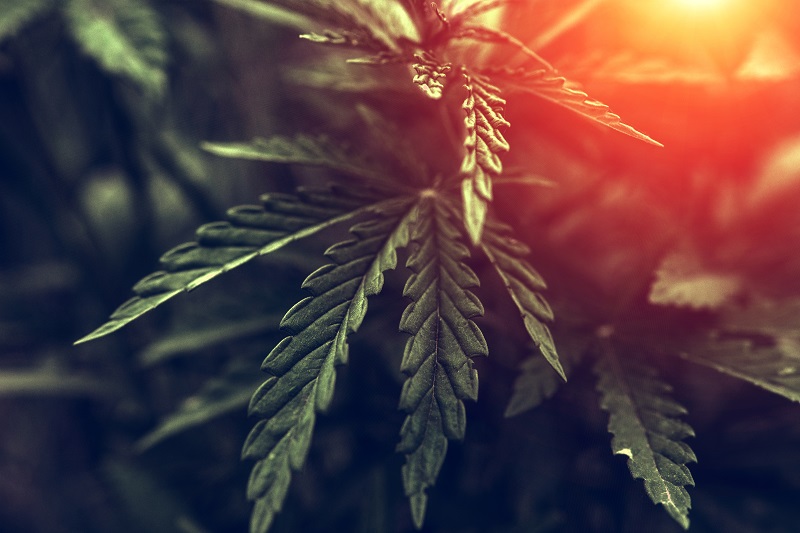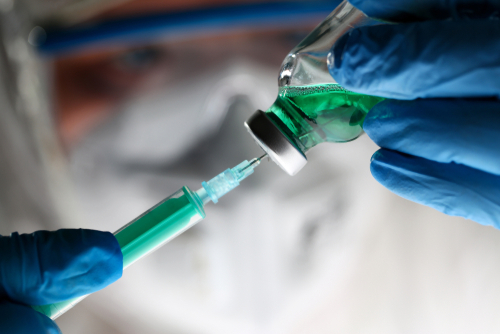Everything You Wanted to Know About CBD Roll-On
CBD Roll-On is one of the popular CBD-integrated therapeutic products in the market. CBD Roll-On has distinct benefits in relieving pain, inflammation, and muscle soreness associated with sports activity and intense exercise.
CBD is an abbreviation for cannabidiol, which is a natural compound derived from the Cannabis Sativa plant. While pain and inflammation have conventionally been treated using opioid-based painkillers or non-steroidal anti-inflammatory agents (NSAIDs), there is a growing concern about their overuse, misuse, or addiction.
The spotlight is on safer, non-addictive, and effective topical pain-relieving agents. CBD has emerged as a safe and non-toxic analgesic that does not have psychoactive properties.
While CBD Roll-On acts in different ways to bring about pain relief after sports activities and workouts, it is important to choose the right topical CBD product for maximum therapeutic benefit.
What is CBD?
Cannabidiol or CBD is extracted from the entire Cannabis Sativa plant. Cannabis Sativa belongs to the family of Cannabaceae that are a group of flowering plants categorized under the order of Rosales. The Cannabaceae family of plants includes eleven genera that further are grouped into 170 different species. Out of the eleven genera, the genus Cannabis is prominent owing to its economical, medicinal, and recreational importance.
According to some researchers, there is only one species of plant that is classified under the genus Cannabis. This species is the Cannabis Sativa plant, which is a stout, aromatic herb that has single seed leaves and petalless flowers. These herbs are cultivated widely across the world, while their origins are traced back to Central Asia and some parts of South Asia.
Cannabis Sativa contains more than 400 types of compounds. About sixty-six to a hundred compounds out of these are unique to Cannabis Sativa plant and therefore termed ‘cannabinoids.’
These cannabinoids include
- Tetrahydrocannabinols – THC
- Cannabigerol – CBG
- Cannabichromene – CBC
- Cannabidiols – CBD
- Cannabinol – CBN
- Cannabinodiol – CBDL
- Cannabitriol, cannabicyclol, cannabielsoin, among others
One of the first cannabinoids to be identified was cannabinol when a British chemist by the name of Robert S. Cahn revealed its partial structure in 1940. Two years later, Cannabidiol or CBD was discovered by an American chemist called Roger Adams. Israeli scientist and professor, Raphael Mechoulam, highlighted the spatial arrangement or stereochemistry of cannabidiol in 1963. The next year, in 1964, scientists also identified THC or Tetrahydrocannabinol’s structure.
THC and CBD are two of the prominent cannabinoids that have been studied extensively. THC exerts psychoactive effects that contribute to the risk of addiction. CBD, on the other hand, has no psychoactive effect and has been extensively studied for its medicinal and therapeutic properties.
Varieties of Cannabis Sativa plants rich in CBD are exclusively cultivated to produce CBD isolates and distillates. After CBD is extracted using techniques such as CO2 extraction, it is combined with carrier/essential oils, including hemp, coconut, olive, or almond, apart from other established therapeutic ingredients. These are then incorporated into topical products such as CBD oil, anti-aging facial serum, sleeping mask, eye serum, pain relief spray, recovery lotion, among others.
The United States Food and Drug Administration (FDA) approved the first drug based on CBD in June 2018 to treat a severe and rare form of epilepsy that is unresponsive to other treatments. This has intensified the attention of the medical fraternity and researchers on CBD’s therapeutic potential.
A growing body of in vivo and in vitro, clinical and preclinical evidence supports the use of CBD as a pharmacological alternative in treating wide-ranging conditions. Research indicates the potential role of CBD in treating opioid addiction as well, owing to its ability to reduce the psychoactive effect of THC.
How does CBD Roll-On work?
Pain and inflammation are the typical responses of the body to external injury, infection, trauma, or internal genetic changes.
These responses can occur immediately (acute response) or gradually that last for a long time (chronic response). The acute response usually occurs immediately following an injury and is the initial phase of the body’s response associated with many changes in the affected area. These changes relate to blood vessel expansion (local vasodilatation), fluid and blood protein accumulation at the site of injury, and the migration of immune cells (neutrophils that fight infection and injury), apart from the release of agents that promote inflammation (inflammatory mediators). Some of the pro-inflammatory agents are cytokines, lymphokines, and histamine.
The combined effect of all these processes, along with the release of pro-inflammatory agents, cause pain, soreness, and swelling after an injury or intense workout.
The pain receptors in the brain are also activated after an injury or trauma, which enhances the feeling of pain.
‘Oxidative stress’ is linked to chronic inflammation. This is a process where ‘free radicals’ released as by-products of metabolism (energy-releasing process) begin a vicious cycle of cell damage. These free radicals are singlet oxygen radicals that are missing an electron, which makes them highly unstable. To become stable, they attack healthy cells and DNA and capture an electron from these. When cells lose an electron, they become unstable, and this sets up the ongoing cycle of destruction, resulting in a state of ‘oxidative stress.’ This process is also linked to inflammation, chronic pain, and many other disease conditions.
The role of the endocannabinoid system
The endocannabinoid system or ECS refers to a complex network in the human body that carries out cell signaling. Discovered in the 1990s, the ECS has three major components that include enzymes, cannabinoid receptors, and endocannabinoids. The ECS has been studied extensively and is known to regulate many body functions, including immunity, fertility, sleep, relaxation, mood, metabolism, and sensory experiences such as pain and pleasure.
These functions are regulated by two types of endocannabinoids, namely AEA or anandamide 2-AG or 2-arachidonoylglycerol.
The endocannabinoids exert their action by binding to cannabinoid receptors, of which two types have been discovered, named CB1 and CB2. Receptors are types of proteins present on cell surfaces and receive and transmit chemical signals.
CB1 receptors are concentrated in the brain while the gastrointestinal system, immune cells, and peripheral tissues contain CB2 receptors.
Researchers propose that pain and other disease conditions are a result of a deficiency of endocannabinoids or a lack of cannabinoid receptors. A systematic review spanning ten years found that a lack of endocannabinoids and receptors explain conditions that cause pain.
CBD exerts indirect action on cannabinoid receptors apart from activating other neuroreceptors that affect pain sensation, such as serotonin 1A receptor and vanilloid receptor 1.
CBD has also been found to control inflammation associated with pain by controlling the production of pro-inflammatory cytokines. CBD also neutralizes reactive oxygen species or ‘free radicals’ that promote chronic inflammation. In a study when different doses of CBD were administered topically on rats that had joint pain, researchers found that pain and inflammation reduced after four days.
As a powerful antioxidant, CBD stops free radicals from inflicting damage on healthy cells.
CBD-integrated topical Pain Relief Roll-On helps indirectly activate endocannabinoid receptors to control pain and inflammation.
Clinical trials on medicinal cannabis indicate them to be a promising approach in treating and managing chronic pain of different origins. Based on the growing body of evidence, the World Anti-Doping Agency or WADA approved the use of CBD for athletes.
Other ingredients in CBD Roll-On
Extra Strength CBD Roll-On features 500 milligrams of CBD isolate extracted from the entire Cannabis Sativa plant using sophisticated extraction techniques. In addition to CBD, the roll-on also has other active ingredients such as menthol, magnesium, and camphor that synergistically act to relax muscles and relieve pain before and after sports activity or intense workout.
CBD: The main active ingredient in CBD Roll-On is isolated CBD that is derived from hemp plant devoid of THC. CBD has powerful anti-inflammatory and antioxidant properties apart from the analgesic effect. While CBD Roll-On has a positive effect on relieving pain, it also relieves inflammation that typically accompanies pain and injury, thereby providing an overall analgesic effect.
Menthol – Menthol is derived from a plant commonly known as peppermint or mint. It is an effective topical analgesic that finds wide use in topical pain relief products and skincare. The cooling sensation that menthol produces is due to the stimulation of thermoreceptors in the skin that signal the brain to perceive this as a cold sensation.
Studies indicate menthol’s effectiveness in relieving pain. In a study, Johar et al. compared the effect of menthol to ice on muscle soreness on sixteen subjects. The participants carried out specific exercises that were designed to bring about delayed onset muscle soreness. The randomized study participants then received either an ice application or topical gel with 3.5% menthol on elbow flexors after two days of completing the exercise. Researchers measured pain perception before and two days after muscle soreness onset, apart from measuring maximum muscle contractions.
They found that topical menthol, as compared to ice, reduced pain and discomfort to a greater extent and improved muscle contractions.
Topical menthol has been found in other studies to reduce pain intensity and symptoms related to carpal tunnel syndrome that produces chronic pain.
High-quality topical CBD Roll-On products feature menthol as an active ingredient to boost the analgesic effect.
Magnesium chloride –Another therapeutic ingredient that finds a place in topical CBD Roll-On products is magnesium chloride. When applied on the skin, the topical roll-on product may help raise the levels of magnesium in the body. Magnesium is better absorbed in the form of magnesium chloride and helps relieve pain along with CBD and menthol.
Magnesium is known to reduce hypersensitivity to pain and in preventing central sensitization. Activation of certain receptors called NMDA (N-methyl-D-aspartate) is linked to pain hypersensitivity, neuropathic pain, and diminished action of receptors that exert pain-relieving effect (opioid receptors). Magnesium acts as an antagonist of this receptor, thereby promoting the action of opioid receptors and bringing about pain relief.
Magnesium therapy has been found to be effective in relieving chronic pain of different origins, such as diabetic neuropathy, herpes, migraine, and chemotherapy-induced neuropathy.
Camphor– Camphor is added to topical CBD Roll-On products to relieve swelling, pain, and to treat skin redness that is commonly associated with muscle soreness or injury. Camphor is derived from the Cinnamomum camphora tree and exerts a soothing effect on the skin by numbing the sensory nerve endings.
Some Extra Strength CBD Roll-On products also contain Methyl salicylate, a substance that helps address musculoskeletal pain in tendons, joints, and muscles. As a counter-irritant, methyl salicylate causes a warm sensation and increases blood flow to the area affected, thereby bringing about pain relief.
How to use CBD Roll-On
Using CBD Roll-On spray is easy, while the product is also convenient to carry to the gym or sports practice areas. Using it before an intense workout or sports activity can help minimize pain and inflammation while applying it after the activity is highly effective in relieving pain and muscle soreness. To use the CBD Roll-On spray, shake well and apply on clean skin in the area where you feel pain or soreness. If the pain is intense, you can rub in the topical spray.
Applying the correct amount of CBD Roll-On is also important to achieve optimal results. However, it is recommended to start with the minimum effective dose initially and gradually increase the dose over time.
To enhance the product’s effectiveness, ensure the area where you apply the CBD Roll-On is washed and cleaned. This enables the maximum dose of therapeutic CBD to enter the body through the skin.
Transdermal or topical CBD application is not associated with side-effects and is safe even at higher doses. If you have experienced skin sensitivity with other products before, you can try a patch test by applying a limited amount of CBD Roll-On on a small area of skin.
When selecting a CBD Roll-On spray product, carefully review the manufacturer’s website to understand the method of extraction used, their commitment to quality, ongoing research, and safety information.
More articles:









